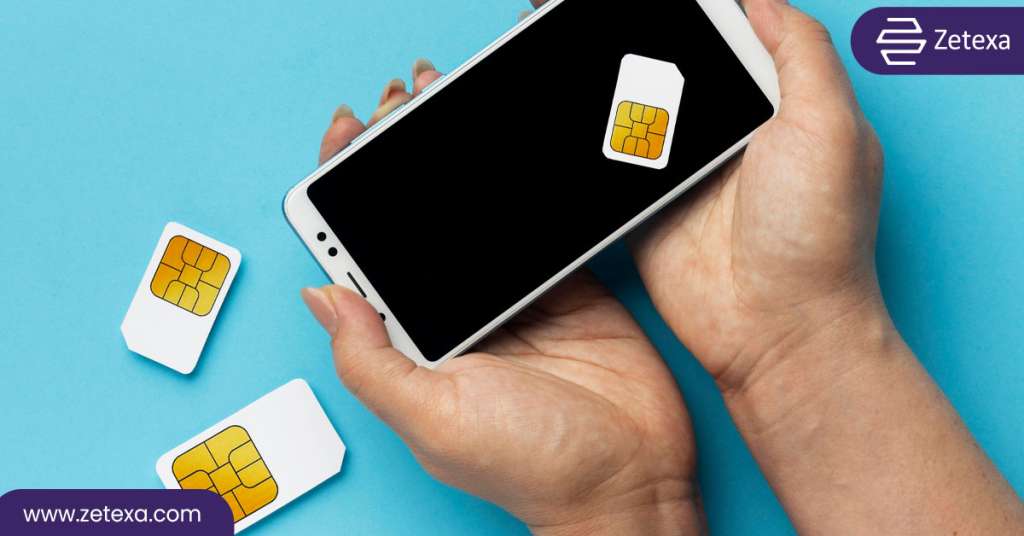Is an eSIM more efficient than a traditional SIM card? This is one of the most debatable questions. The question has garnered more attention because of the rising popularity of travelling eSIMs.
Lately, many people have relied on eSIMs because of their flexibility and hassle-free connectivity. When you travel abroad, you always look for convenient and budget-friendly connectivity options. eSIM technology has turned the tables in terms of reliable connectivity and customised data plans.

However, this technology hasn’t yet reached all doors. A specific section of people still rely on traditional SIM cards. Moreover, some people hesitate to buy an eSIM as they are not quite aware of this technology. There is always confusion regarding which is better and whether using an eSIM over a physical SIM is good.
Worry not; this guide is your rescuer. Learn details about traditional physical SIMs and eSIMs and the differences between both of them.
Is a Travelling eSIM Better than a Physical SIM?
SIM or Subscriber Identity Module is touted as a technology that helps to communicate over a network. When you insert a physical SIM in your smartphone, your device is registered with a network.
The working technology of a physical SIM and an eSIM are similar, as both of them allow a smartphone to connect with the carrier’s network. The significant difference lies in the form – travelling eSIMs are in digital form and are embedded inside your devices.
The first eSIM device emerged in 2015. However, this technology hit the market in 2019 after the iPhone XR launch [in 2018]. It became the first iPhone that was designed to support one physical SIM and an eSIM. After that, Google Pixel phones, Samsung Galaxy models, and other new phones started using this technology. Since then, eSIM technology has never looked back.
The Similarities: Physical SIM and Travelling eSIM
A misconception of an eSIM and physical SIM are entirely different technologies that always surround people. However, both share several similarities that you should know before making a choice about which one to buy.
- Both work on the technology of connecting your smartphone to the provider’s network.
- eSIM and traditional SIM technologies can be used in other devices, not just smartphones.
- Have the ability to search a device and the plan you are using.
- They can be used in dual-SIM devices.
- Physical SIM cards and eSIMs offer customised data plans.

Differences – Physical SIM Card and Travelling eSIM
For so many years, physical SIMs have been the reliable and go-to mobile communication choice. They are touted as small chips that preserve subscriber details to connect to your mobile network. Users love them because of their user-friendly features. However, the risk of theft, damage, loss, restricted network, and losing connectivity comes along with a physical card.
That’s when a travelling eSIM comes into the picture. They are the result of gigantic growth in the telecom industry. Unlike your traditional SIM cards, an eSIM can be directly integrated or embedded into your device. Furthermore, the requirement of physically swapping a SIM card gets eliminated.
These SIM cards are a boon for all international travelers, especially in terms of connectivity and global networks. There are specific points of differences that can make a travelling eSIM different or maybe better than traditional SIMs.
Read below to learn these differences:
Weighing the Pros:
Pros of a Physical SIM:
- Physical SIM gives the advantage of being temporarily inserted into another device if your smartphone is broken
- Contacts are saved on the SIM
- You can use a physical SIM in a foreign country on roaming charges
- Not all operators or even countries support the in-built technologies, but this problem is not there with SIM card
Pros of an eSIM
- A travelling eSIM is far from the fear of being scratched, broken, or lost
- You can easily switch from one service provider to another
- There are various customised options that you can choose based on your budget
- Even in remote locations, it gives a good connection
Physical Aspect
A notable difference between an eSIM and a traditional SIM lies in their physical form. When you are using an eSIM, there is no need to insert a SIM while switching between networks or devices. It can be a convenient factor for those who travel frequently or use multiple devices. Thus eliminating the need to carry a physical SIM.
Activation Process
The activation process of a physical SIM can be lengthy or time-consuming. You have to visit a store or provide proof of identification. However, when you use a travelling eSIM, the activation process is quite simple. You can do it remotely or from your home. You need to scan a required QR code or an activation code. In this way, you can set up an eSIM in a few minutes.
Switching Networks
Switching between networks is not complicated in eSIMs. You can change your network provider easily without changing any SIM card. Switching networks in an eSIM is more straightforward for people who travel frequently. However, you have to wait for its activation in a traditional SIM. Then, you have to insert it in a device manually. This can take much time.
Safety
When it comes to safety, an eSIM gets an edge. Physical SIM cards have the fear of being lost, stolen or getting damaged. Meanwhile, travelling eSIMs are digital and built into your devices. With an eSIM, you can get rid of the tension of your SIM getting lost or misplaced. Moreover, you can protect your data from any unauthorised access.

Navigating Towards Transition
While choosing between a travelling eSIM or a physical SIM, consider the following factors:
- Convenience: Convenience is something that every international traveller looks for. An eSIM is better in offering more convenience as it can be activated remotely. You may not need to visit the physical store to buy a SIM.
- Strength of Signals: In terms of signals, eSIMs or physical SIM cards compete to offer reliable connectivity. However, an eSIM gives much better signals and connectivity in remote areas than physical cards.
- Security: The security of your data is a crucial factor to consider before choosing the correct SIM. Generally, eSIMs offer more security than physical SIMs in terms of care, data protection and unauthorised access.
Always think about your travel needs and the mobile plans you want to choose for your next trip. Switching from a traditional SIM card to an eSIM is simple and follows a straightforward procedure. First, check if your device is capable of carrying a travelling eSIM. Then, contact the carrier for SIM activation and start enjoying the benefits.
Trusting Zetexa as Your Next Traveling eSIM Partner
If you are thinking about buying a travelling eSIM, you can trust Zetaxa as your travel partner. The ZetSIM App of Zetexa is known to offer seamless connectivity across so many countries. Get the best eSIM of your choice, and that too at affordable rates. With Zetaxa’s local and global plans, you can stay connected with your family and friends.

Download the ZetSIM App from App Store
Download the ZetSIM App from Google Play store
FAQs
A physical SIM is a small chip inserted into your phone, while an eSIM is a digital SIM embedded within your device. eSIMs allow users to switch between carriers without needing to swap physical cards.
eSIMs are more convenient for international travelers since they allow you to download a data plan instantly without needing to find a local SIM card. Zetexa eSIM offers global coverage with seamless activation, making it a superior choice.
Not all smartphones support eSIM technology. However, most recent models from Apple, Samsung, and Google are eSIM-compatible. Check your device settings to see if it supports eSIM before purchasing one.
Yes, eSIMs are considered more secure because they cannot be physically stolen or lost. Additionally, they use advanced encryption methods, making them less vulnerable to fraud.
Zetexa eSIM offers instant activation, global coverage, and cost-effective data plans, making it the ideal choice for frequent travelers. With no need for physical SIM swaps, Zetexa eSIM simplifies connectivity wherever you go.



